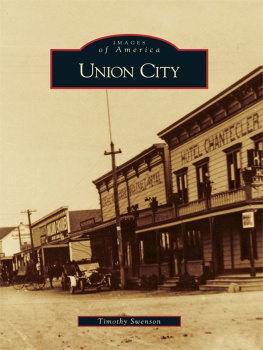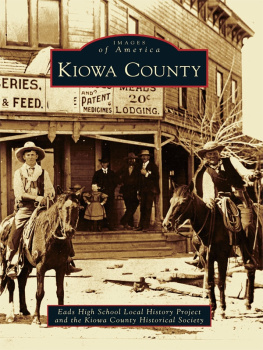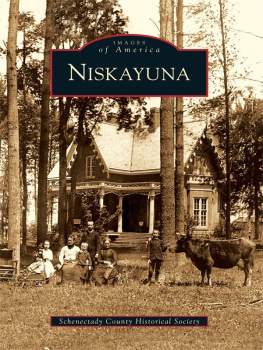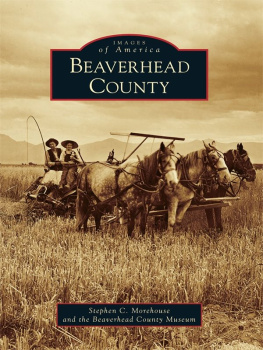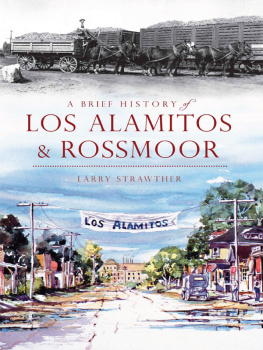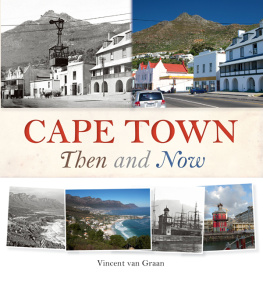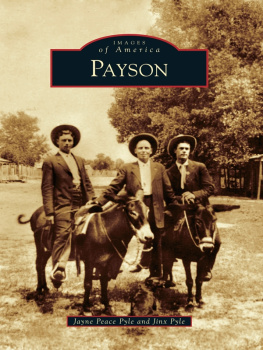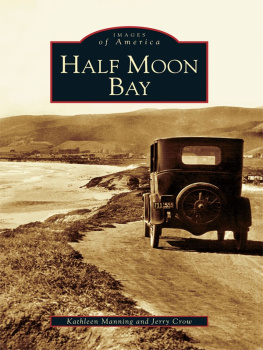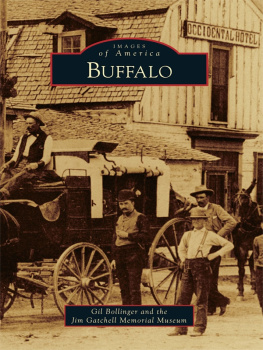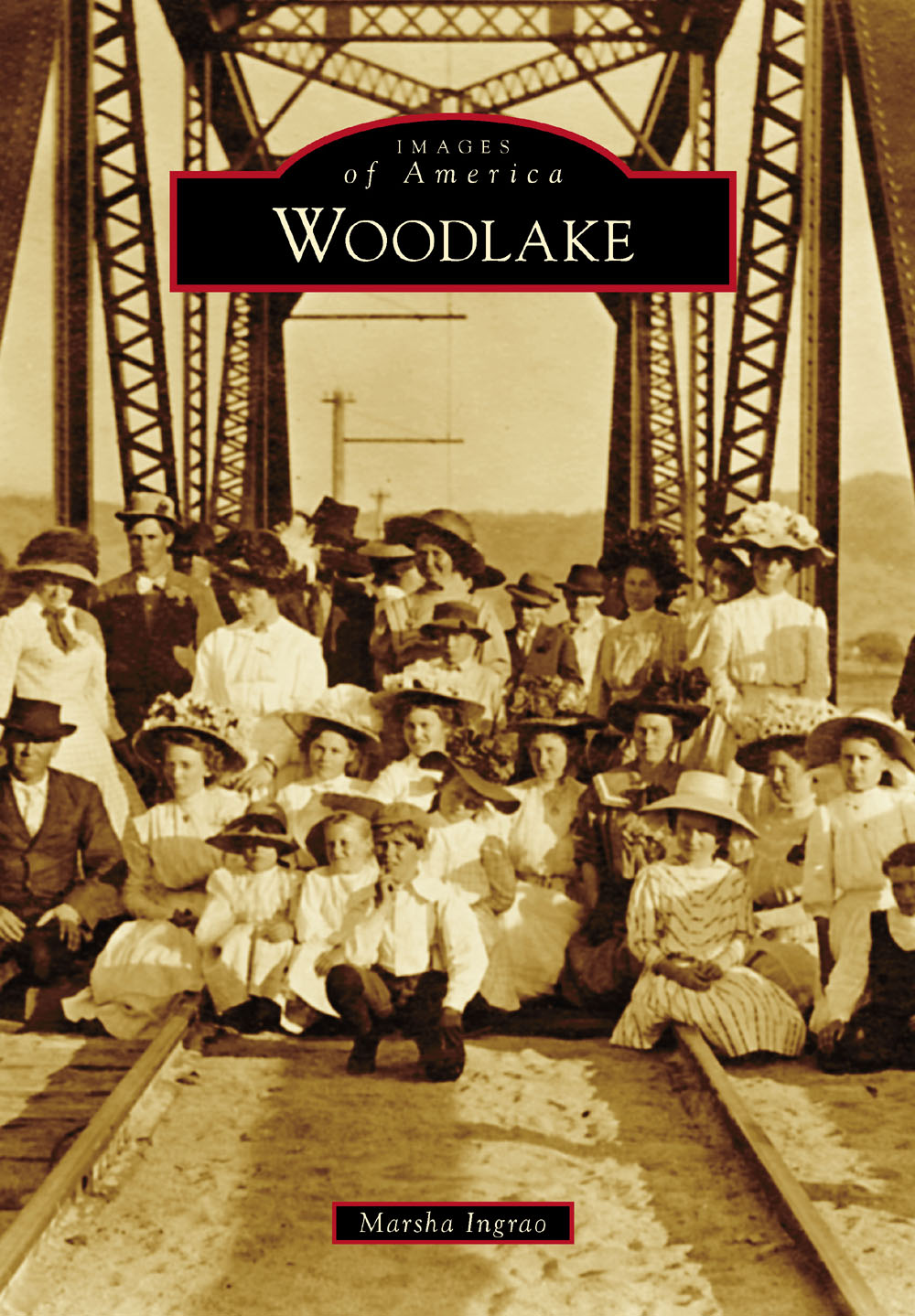
IMAGES
of America
WOODLAKE
ON THE COVER: Finished in October 1909, the 110-foot steel span of Kaweah Bridge was one of the most photographed Visalia Electric structures. Families took picnics near the Old Iron Bridge along the rivers edge. Flanked with oak trees with the backdrop of mountains and foothills and framed by the geometric steel structure, families could not find a more a more picturesque location for a group photograph. (Courtesy of Marcy Miller.)
IMAGES
of America
WOODLAKE
Marsha Ingrao

Copyright 2015 by Marsha Ingrao
ISBN 978-1-4671-3319-7
Ebook ISBN 9781439652817
Published by Arcadia Publishing
Charleston, South Carolina
Library of Congress Control Number: 2014952616
For all general information, please contact Arcadia Publishing:
Telephone 843-853-2070
Fax 843-853-0044
E-mail
For customer service and orders:
Toll-Free 1-888-313-2665
Visit us on the Internet at www.arcadiapublishing.com
To Gary and Becky Davis and Roy Lee and Donna Davis, whose family first settled in the area and has remained through the generations
CONTENTS
ACKNOWLEDGMENTS
Author of Within the Magic Circle Grace Pogue iconized Woodlake Valley as the golden valley within the magic circle. Although Woodlake currently lacks a local historical society, community members are not without an interest in Woodlakes heritage.
I am honored that Ginny Rasmussen at Arcadia Publishing asked me to write Woodlakes story. Individuals donated most of the documents and images for this publication. Referrals for contributors rolled in throughout the writing period, starting with Gary Davis, and ending with Eunice Atherton. The Kiwanis of Woodlake quarterly magazine, Whats Happening in the Foothills, advertised this project at no charge. Without these wonderful people, too many to name, this project would not have been possible.
This book does not document every event that shaped Woodlake. Feeling the passion and love that people of Woodlake from all over the globe have for their hometown humbles me. I apologize for the many stories and pictures omitted in this brief edition. I hope I captured a small portion of the fun and pride Woodlakers displayed for their town and neighbors.
I thank the staff at city hall, Marcy Miller, Stan and Janet Livingston, Ellie Cain, Morris Bennett, Monica Pizura, Virginia McKee, Bob and Linda Hengst, Randall Childress, Laura Spalding, Sally Dudley, Sophie Britten, Keith Glentzer, Frank and Barbara Ainley, Marilyn Young, the Hijinio Reynoso family, Slim, Eva, and Rick Knutson, Richard Rasmussen, Manuel Ramon, Lupe Rippetoe, Lisa Kilburn, Chris Crumly, Humphrey Valero, Buddy Holder, Judy Vaccaro, Claude Vice, Ernie Garcia Sr. and Jr., Carl Scott, and Bill West for giving me personal interviews, photographs, news articles, and books. Robert Edmiston became not only my greatest contributor but also coresearcher and fact editor. Sally Pace and Lauri Polly cheered me on, made phone calls, and set appointments for me. Cheryl Strachan and Lisa Raney at the Tulare County Library in Visalia found newspaper articles and photographs.
Finally, I am most grateful for my husband Vince Ingraos support and patience holding our home and life together while I scurried around the countryside with my scanner and computer meeting the people living in our town.
All of the authors profits from the sale of this book will go to the Woodlake High School Foundation.
INTRODUCTION
Songwriter F.B. Silverwood described the Woodlake Valley in the California state song, I Love You California.
When the snow crowned Golden Sierras
Keep their watch oer the valleys bloom...
It is here nature gives of her rarest,
it is Home Sweet Home to me.
Woodlake, California, encompasses 1,440 acres of rolling valley encircled in mountains and foothills, guarded from frost and fog that assails the rest of Tulare County. Woodlake Valley, which lies just 40 minutes west of Sequoia National Park, provides some of the richest natural resources in the world. Native to Woodlake Valley was the Wukchumne subtribe of Yokuts Indians, one of the larger tribes in North America due to the abundance of natural resources. According to author Frank Latta, no full-blooded Wukchumne remain, but some tribe members married settlers and still live in the area. Varied spellings of Wukchumne exist in the text because different sources or organizations spelled the tribal name differently.
Just as staid and protective as the circle of mountains are longtime residents, descendants of the early pioneers and later immigrants who fell in love with Woodlake and wove themselves into the community tapestry. Families expressed pride in the work their ancestors shared to develop the valley: logging, ranching, growing and packing citrus, milling lumber, manufacturing cement piping, and digging wells and irrigation canals to create the infrastructure of the city and surrounding groves and ranches.
In the 1850s, soon after the Gold Rush, newcomers from around the world ventured south into a farmers paradise, the Kaweah delta valley. A group of doctors and lawyers came from Mariposa County to establish Tulare County at the foot of the old Election Oak Tree near Visalia. Approximately 15 to 20 miles east in the foothills of the nearby Sierra Nevada, the first pioneer, Thomas H. Davis, camped overnight in the valley, found peaceable Indians, and decided to return. In 1853, he spent his savings, brought cattle up from Mexico along the old Indian trail, now California Highway 99, and settled in the Woodlake Valley. As more settlers arrived, they surveyed the land, built houses, and focused on growing crops and raising cattle. Six pioneer families established a makeshift neighborhood named Stringtown, which the flood of 1867 destroyed. Undeterred, they moved uphill, rebuilt their homes, and bonded the community against disaster. Throughout ensuing years, attracted to the natural beauty and prosperous agriculture, others came from around the world and found their niche. Their children grew up in the valley, married, had children, and remained, protecting and developing in the land they love.
In 1907, Los Angelesarea investor Gilbert Stevenson purchased 1,500 acres to grow citrus. A decade later, his Sentinel Butte Ranch held the record as the largest individually owned orange ranch in the world and shipped 149 train cars of citrus. By the fall of 1910, Gilbert Stevenson took an option on another 13,000 acres and began planning and building his dream, the town of Woodlake, starting with the Brick Block, a two-story business building, at the entrance to downtown. He envisioned a tourist town, brick buildings lining the streets accentuating its natural beauty along Bravo Lake with the Sierra Nevada as a backdrop. Many of the residents today descend from the friends and colleagues of Gilbert Stevenson who bought into his dream and moved to Woodlake to raise their families. They joined the pioneer community pillars.
Gilbert Stevenson remained in Whittier, California, to watch over his real estate and insurance interests there. He hired Henry McCracken to manage Sentinel Butte Ranch. Gilbert Stevenson lost his wealth during the Great Depression and died penniless and alone in 1938. In 1932, however, he deeded some of his property to Henry McCrackens son Courtney. Though Courtney McCracken never married, he continued Gilbert Stevensons legacy through his own philanthropic generosity.
The enormous need for labor to plant and harvest vast acreages brought in many migrant workers. Many of them fell in love with the area and settled down. With a population of 1,140, predominately temporarily employed persons earning $500 to $700 per year, Woodlake struggled to become incorporated in 1939. Spearheaded by grocery owner and community activist A.P. Haury, Woodlake finally became Tulare Countys seventh incorporated town in 1941. How Woodlake continued to grow through two world wars, the Great Depression, and other natural calamities and government resolutions puzzled
Next page

